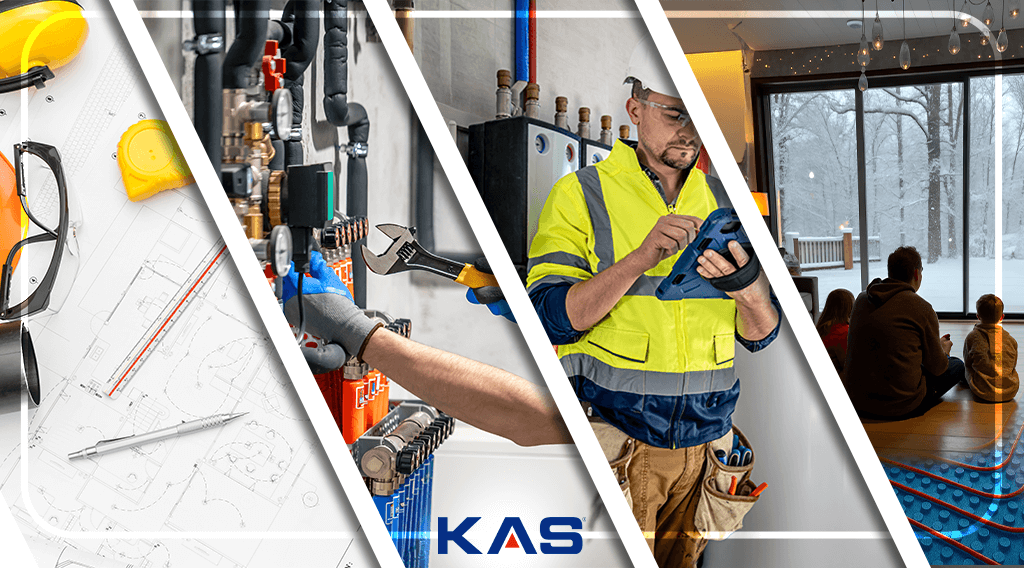10 Critical Points to Consider in Home Plumbing Systems
Home plumbing systems form the foundation of your comfort and safety. Proper installation of water, heating, and gas lines can prevent future malfunctions, leaks, and costly repairs. Whether you are building a new home or renovating an existing one, this article outlines 10 essential points you must pay attention to. By identifying potential mistakes in advance, you can control costs and ensure your home remains comfortable and safe for years to come.

1. Project Design and Planning
The success of a plumbing system starts with accurate planning. Water inlets/outlets, hot and cold water separation, and heating systems must be carefully designed and positioned according to usage scenarios. A poorly planned system can lead to costly renovations down the line.
2. Quality of Materials
Pipes, valves, flex hoses, and faucets must be certified for quality. Low-quality components, especially in hot water systems, can quickly deform or lose their sealing ability. All materials should be TSE and CE certified and, if possible, backed by a brand guarantee.
3. Proper Pipe Installation
PPRC or other plastic pipes must allow for thermal expansion. Pipes should be securely fastened to avoid risks of bending, crushing, or breaking. Insulation is critical to prevent heat loss and ensure energy efficiency.
4. Balancing Underfloor Heating Systems
In underfloor heating setups, pipe lengths must be balanced to ensure equal flow to each area. Uneven distribution can result in some rooms being too hot while others remain cold. Proper collector selection and installation are crucial to achieve balance.
5. Appropriate Valve Usage
Valves are essential for controlling water flow and managing repairs. The correct type (ball, butterfly, dirt trap, etc.) should be used and placed in easily accessible areas. Valve connections must be sealed properly using Teflon tape or gaskets to prevent leaks.
6. Pressure Regulation
Water pressure can cause significant problems, especially in multi-story buildings. High pressure shortens the lifespan of fixtures and can lead to leaks. Installing a pressure-reducing valve is recommended. Regular checks of boiler and water heater pressure levels are also necessary.
7. Leak Testing
After installation, pressure tests must be conducted to check for any leaks. Both hot and cold water lines should be tested, and even the smallest leak must be addressed to ensure long-term reliability.
8. Flex Hose Selection and Installation
Flex hoses are a practical solution for connecting fixtures and appliances. However, they must be chosen in the right length and diameter. Oversized hoses can cause pressure loss and sagging. Hose ends should be properly tightened and not deformed during installation.
9. Support at Turns and Connection Points
Pipes need support at turns, joints, and passage points to prevent vibrations, bending, and loosening of connections. Using fastening clips at regular intervals helps maintain the structure and longevity of the system.
10. Regular Maintenance and Inspection
While plumbing systems are built to last, periodic inspections are vital. Issues like hose wear, stiff valves, and dripping faucets may develop over time. Undetected water leaks can cause significant damage to structural elements.
Reliable Plumbing Solutions with KAS Quality
Long-lasting and trouble-free plumbing systems rely not only on correct installation but also on the quality of the components used. KAS is a brand that sets high standards in the production of valves, flex hoses, PPRC pipes and fittings, underfloor heating systems, and faucets.
KAS products are known for their durability, resistance to high pressure, and leak-proof performance, making them a preferred choice among plumbing professionals in Turkey and around the world. Whether it’s a residential, commercial, or industrial project, KAS offers a wide range of solutions that make a real difference. If you want to prioritize safety and comfort in your home, experience the reliability of KAS.

 English
English